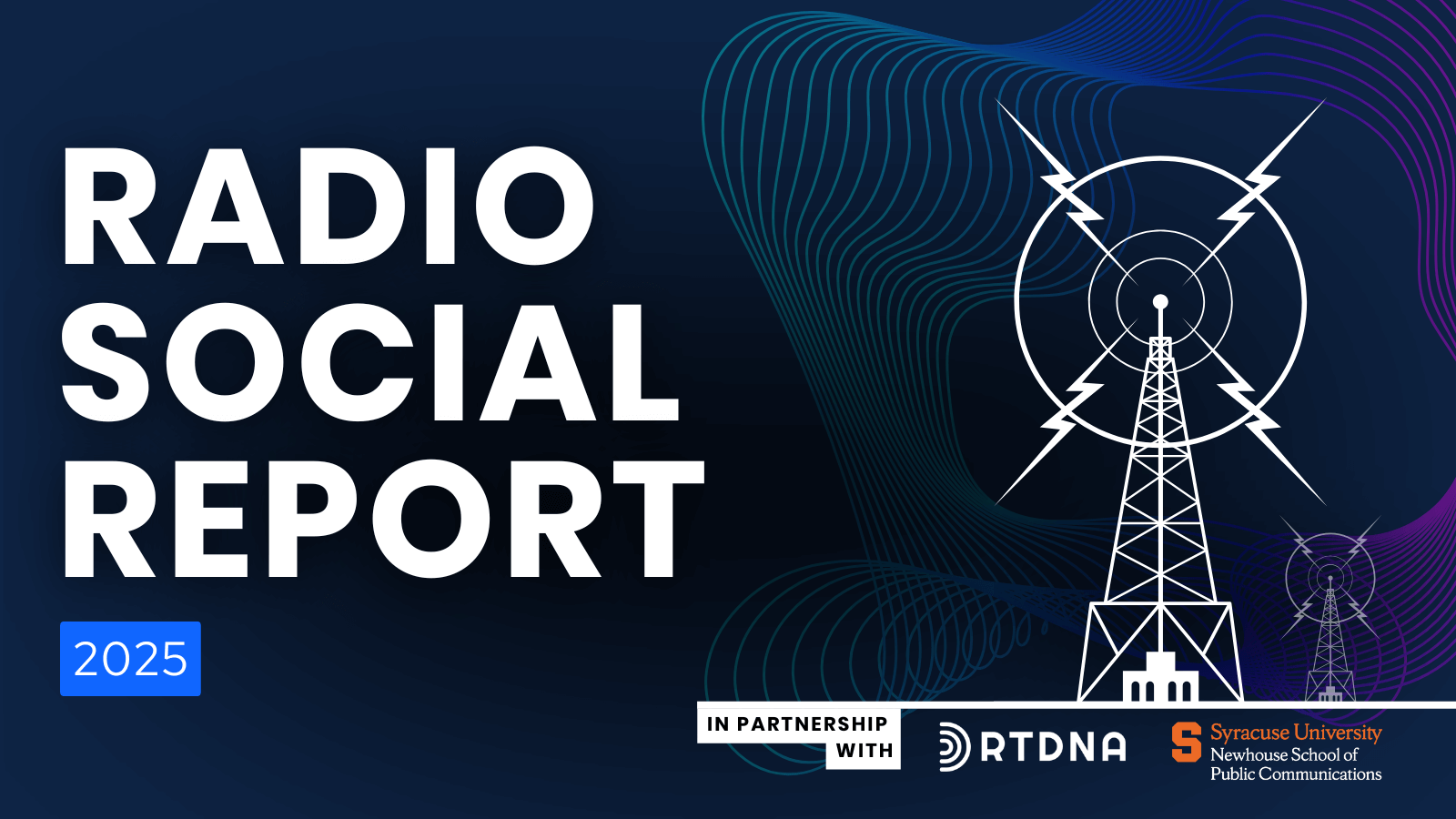Radio stations turn to Facebook over Twitter/X

Sept. 4, 2025 — The latest RTDNA/Newhouse School at Syracuse University Survey found the biggest change in radio social media last year came in the drop in use of X (formerly Twitter). This year’s shows drop-offs in constant X use but a small return to Facebook.
Meanwhile, Facebook use is up slightly around the country. Overall, Facebook use is up by only 1.6 points. The largest increase came from large markets, up 8.2 points over last year. Also, like last year, the overwhelming majority of stations still have a Facebook page with a small decline among the smallest markets. Commercial stations are back up by 4.5% after falling 5 last year, while non-commercial stations are down 2.8 after being up by less than a point last year.
Major markets were much more likely to report using YouTube. Medium markets were just as likely to report using TikTok as they were Threads. And small markets were the most avid Snapchat users. Non-commercial stations were more likely than commercial stations to report using every platform except Snapchat. Non-commercial stations were also far more likely to report using BlueSky. This aligns with the 2024 public media announcement advising against using X.
Read the Full Report
About the Authors
Bob Papper is Research Professor of Broadcast and Digital Journalism at Syracuse University and has worked extensively in radio and TV news.
Keren Henderson is Associate Professor of Broadcast and Digital Journalism at Syracuse University and has worked as a news producer and video editor.
Tim Mirabito is Assistant Professor of Broadcast and Digital Journalism at Syracuse University and worked in television, radio, print and online media.
This research was supported by the S. I. Newhouse School of Public Communications at Syracuse University and the Radio Television Digital News Association.
About the Survey
The RTDNA/Newhouse School at Syracuse University Survey was conducted in the fourth quarter of 2024 among 1,918 operating, non-satellite television stations and a random sample of 4,763 radio stations. The television response rate is different for every question, but valid responses came from as many as 1,406 television stations (73.3%) and 599 radio news directors and general managers representing 1,632 radio stations. Some data sets (e.g. the number of TV stations originating local news, getting news from others and women TV news directors) are based on a complete census and are not projected from a smaller sample.
